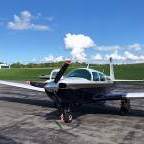231 Carbon Monoxide Problem
-
Members Online
- MattD89
- mooneyflyfast
- FlyingDude
- Ragsf15e
- tbone40x
- salty
- M20S Driver
- PeteMc
- Sue Bon
- Stubby
- Shadrach
- LANCECASPER
- Seth Miller
- mariosmt
- Florian Guthardt
- Planegary
- Texas Mooney
- rahill
- exM20K
- RescueMunchkin
- KB4
- Missile 300
- tankles
- Aviationist
- BennyandtheJet
- CCAS
- jlunseth
- MatthiasArnold
- denbmd
- dzeleski
- tim417
- TigerFan
- TCC
- atpdave
- Jack Burson
- wombat
- carusoam
- flyfast
- joepilotmooney
- jsclafani
- Andy95W
- haymak3r
- EricJ
- Skates97
- TheAv8r
- cbogie


Recommended Posts
Join the conversation
You can post now and register later. If you have an account, sign in now to post with your account.